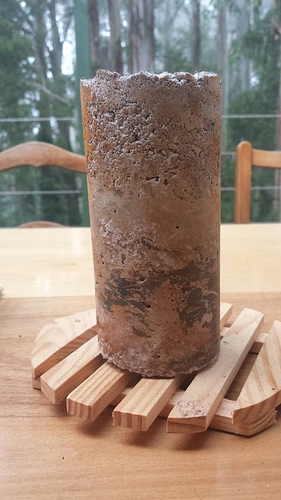The 3rd Run
This evening, we tried a third run.
The increased airflow made a big difference when we flared the unit. Previously, the flame from the flare stayed in the flare can. Now, it leaped out of the can 3 feet in the air.
We decided to “go for the gusto” and try starting entirely on charcoal gas (no gasoline).
We had already run the generator dry of gasoline about 30 minutes before in a run-down test.
We cranked on it with the drill, and fiddled with the gas mixture. It took a while to start, but I can’t say that it was any worse than starting on gasoline had been about 30 minutes before. The sweet spot for the mixture was right around half-open (this contrasts with our experience the night before, when the air needed to be almost completely shut off, probably because of air leaks in the system).
As you can see, the fire heated up to a blinding glow very quickly.
With the melted nozzle on our mind, we didn’t waste any time throwing the exhaust gas to it this time. That moderated things to a more mellow glow.
We didn’t have to mess with much of anything, or shake the barrel or anything else. The thing just sat there and ran like a top. After things were all warmed up, the sweet spot seemed to be having the exhaust return valve about 3/4 open, and having the air intake between 1/2 and 3/4 open.
Even with things moderated this way, I began to be concerned that we may be melting the nozzle again. As an experiment, I decided to open the exhaust return valve fully.
This cooled things off enough that we lost power, and the generator died. But it had been running perfectly for about 14 minutes. Much better all the way around than the previous night. And we were super-excited to have started up completely on charcoal gas without any petrol or ether helping us along.
We were very happy with these results.
PS: During the run, we found a new leak. The bilge blower has an exit for the wires. Charcoal gas was blowing out of this small opening. It needs to be plugged with RTV.
Anyway, I am anxious to share some video of the gasifier in action. I will try to figure out how to upload some videos.








